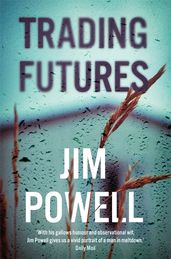
Things We Nearly Knew
Synopsis
How much do we know about the people we love? And would you want to know the truth?
'An engrossing read' Sunday Times
There’s a bar at the crossroads on the way out of town. Or the way in, depending on whether you’re coming or going. Marcie and her husband have run it for years. After thirty years of marriage, there aren’t many secrets left between them. Couples often say that, don’t they? But it’s not always true.
Arlene appeared in the bar one day, hoping that she’d find a man called Jack. Franky came back to town soon after, hoping that people might have forgotten the mess he’d left behind him the first time around. Franky’s problem had always been women. Women and money. What Arlene’s problem is isn’t clear. It’s obvious she has a history, but who doesn’t?
As Arlene gets closer to finding Jack – her father? her lover? – the bar becomes the scene of a great unravelling. In Jim Powell's Things We Nearly Knew, secrets buried a lifetime ago are dragged into the light.
Details
Reviews
The plot is expertly spun out . . . an engrossing read.Sunday Times
If you didn’t know Jim Powell was British, you wouldn’t guess from this hard-boiled slice of Americana, narrated by the middle-aged owner of a Nowheresville bar . . . with a wry charm that grips you right to the sombre finish.Daily Mail
Powell’s narrator is the consummate bartender complemented beautifully by the astute Marcie. It’s such a clever device: backstories abound and anecdotes are legion as befits the profession. The story unfolds beautifully . . . A thoroughly enjoyable piece of storytelling, well turned out in every sense.A Life in Books blog

